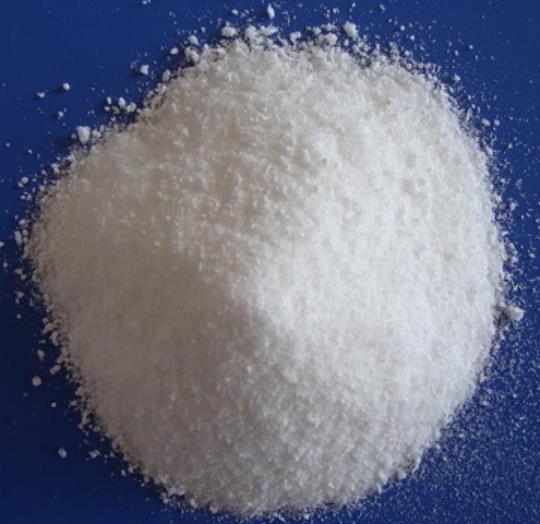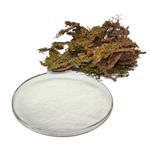Unlocking the Neuroprotective Potential of Huperzine A: Insights into Its Synthesis, Composition, and Applications
May 29,2024
Introduction to Huperzine A
Huperzine A, a naturally occurring sesquiterpene alkaloid derived from the Chinese club moss Huperzia serrata, has garnered considerable attention in the chemical and pharmaceutical fields due to its significant impact on neuroprotection and cognition enhancement. Esteemed for its ability to improve memory and mitigate cognitive decline, this compound is often studied for its potential therapeutic benefits in treating age-related neurodegenerative diseases, especially Alzheimer’s disease. Researchers value Huperzine A not only for its effectiveness but also for its relatively low toxicity and few side effects, making it an appealing candidate for long-term treatment strategies.

Figure 1 Characteristics of Huperzine A
Synthesis of Huperzine A
The synthesis of Huperzine A involves several complex chemical reactions that ensure the preservation of its potent bioactive properties. Initially isolated from Huperzia serrata, Huperzine A can now be synthesized through a series of steps that include cyclization, oxidation, and reduction processes. Recent advancements in synthetic chemistry have enabled the production of Huperzine A on a commercial scale, ensuring availability for further research and pharmaceutical applications.
Main Components
The molecular structure of Huperzine A features a unique arrangement of nitrogen and oxygen atoms, essential for its interaction with neuroreceptors. Its alkaloid nature contributes to its efficacy in crossing the blood-brain barrier, a critical feature for neurological applications. The compound's active sites are specifically tailored to offer high affinity and selective inhibition of acetylcholinesterase, an enzyme involved in the breakdown of the neurotransmitter acetylcholine. This selectivity not only enhances synaptic responses but also minimizes the likelihood of peripheral side effects, a common challenge with other acetylcholinesterase inhibitors. Furthermore, its ability to bind precisely to the enzyme's catalytic site ensures prolonged action, making it particularly effective for sustained therapeutic use.
Applications of Huperzine A
Huperzine A's primary use is in the treatment of neurodegenerative conditions such as Alzheimer's disease. By inhibiting acetylcholinesterase, Huperzine A increases acetylcholine levels, enhancing cognitive functions such as memory and learning in affected individuals. Beyond neuroprotection, it is also investigated for its potential benefits in protecting nerve cells from oxidative stress and apoptosis, suggesting broader applications in neurological health maintenance. Additionally, its potential to manage symptoms of conditions like myasthenia gravis and aid in stroke recovery has sparked further research interest. Studies are exploring how Huperzine A might mitigate glutamate toxicity, which can lead to neuronal damage, thus potentially offering protective mechanisms against a range of psychiatric disorders including depression and schizophrenia. Its versatility in addressing various aspects of brain health positions Huperzine A as a promising compound in the field of neuro medicine, with ongoing trials aiming to expand its therapeutic applications and confirm its efficacy and safety profile in diverse patient populations.
Storage Methods
Proper storage of Huperzine A is crucial to maintain its chemical integrity and therapeutic efficacy. It should be stored in a cool, dry place, away from direct sunlight and moisture. The compound is sensitive to heat and oxidation, which can lead to degradation of its active components. Therefore, it is typically stored in amber-colored glass containers that minimize light exposure, ensuring long-term stability and effectiveness. Moreover, it is advisable to use air-tight containers to prevent exposure to atmospheric gases that could further accelerate degradation. Periodic checks are recommended to ensure the compound does not undergo unwanted chemical changes, maintaining its potency for clinical and research purposes.
Conclusion
As research continues to unravel the full potential of Huperzine A, its role in both therapeutic and cognitive enhancement applications remains a focal point of interest among chemical professionals. Its complex synthesis, potent bioactive components, and broad utility make Huperzine A a standout compound in the realm of neurochemistry and pharmacology. With ongoing advancements in synthetic techniques and a deeper understanding of its mechanisms, Huperzine A is poised to make significant contributions to the field of medicinal chemistry.
![]() References
References
[1]Li, Jun, et al. "Huperzine A for Alzheimer's disease."Cochrane Database of Systematic Reviews2 (2008).
[2]Bai, D. L., X. C. Tang, and X. C. He. "Huperzine A, a potential therapeutic agent for treatment of Alzheimer's disease."Current Medicinal Chemistry7.3 (2000): 355-374.
- Related articles
- Related Qustion
Sodium metabisulfite, a chemical compound with the formula Na2S2O5, serves as a versatile agent widely utilized in various industrial and chemical processes.....
May 29,2024APIIndomethacin displays rapid absorption, dose-proportional peak plasma concentrations and unique actions in conditions like trigeminal autonomic cephalalgias.....
May 29,2024APIHuperzine A
120786-18-7You may like
- Huperzine A
-

- $60.00 / 1G
- 2024-07-11
- CAS:120786-18-7
- Min. Order: 1G
- Purity: 98% 99%
- Supply Ability: 10000
- Huperzine A
-

- $0.00 / 1kg
- 2024-07-11
- CAS:120786-18-7
- Min. Order: 1kg
- Purity: 1-98%
- Supply Ability: 1000kg
- Huperzine A
-

- $100.00 / 1kg
- 2024-06-19
- CAS:120786-18-7
- Min. Order: 1kg
- Purity: >99%
- Supply Ability: 20tons




